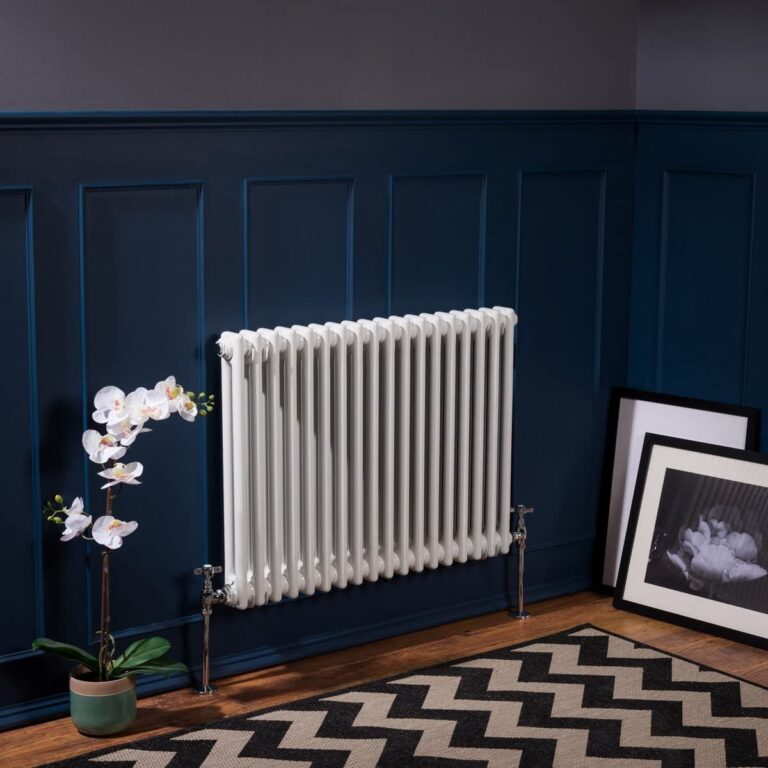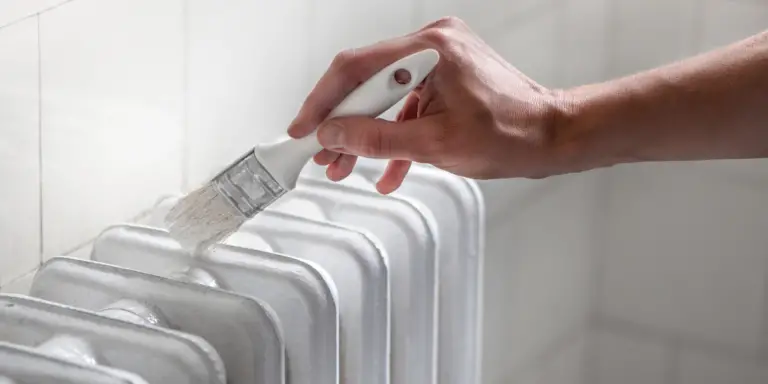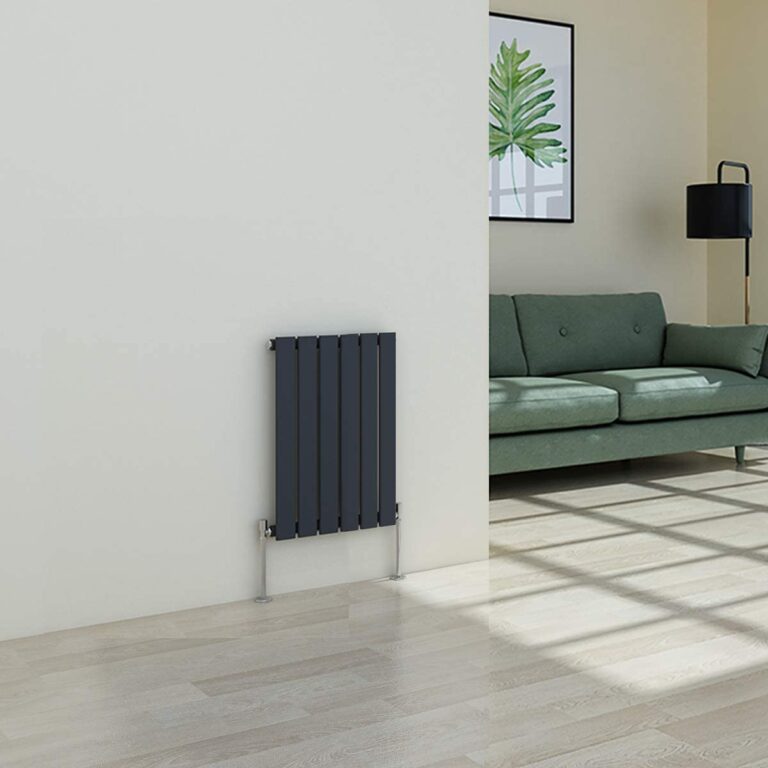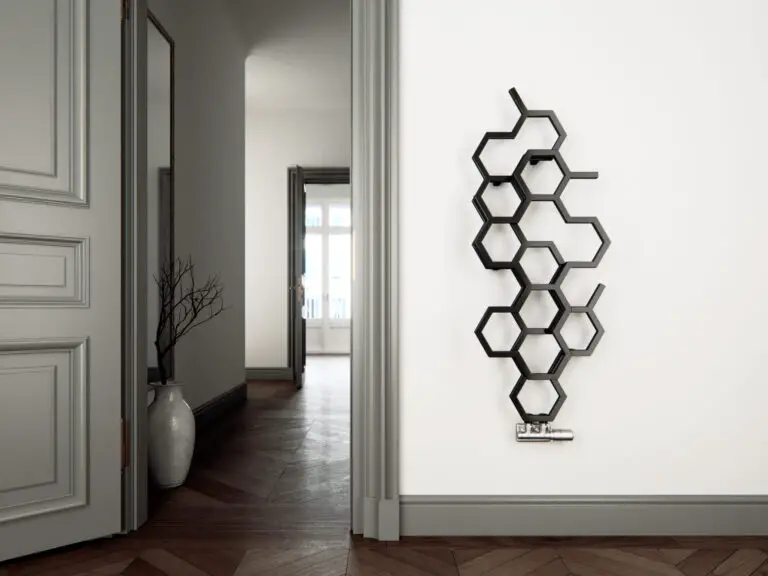You might want one for its aesthetic appeal or to keep small hands safe from hot surfaces, but have you thought about the influence a radiator cover may have on the heat that should be warming your rooms?
Different materials, designs, and installation practices all influence how much a cover might affect your radiator’s output. As you consider the choices, be aware that covers vary in effectiveness.
Stay with us, and you will soon understand if a radiator cover is a sound choice or an attractive hindrance in your search for comfort.
What is a Radiator Cover
A radiator cover is an enclosure that surrounds a heating radiator, typically made from materials such as wood or metal, designed to integrate with room decor while allowing heat to spread effectively.

The advantages of radiator covers go beyond just good looks; they also offer protection by preventing pets and children from touching hot surfaces.
When choosing materials for radiator covers, wood is a good option due to its adaptability, or you might select galvanized metal for its heat distribution properties.
There are many do-it-yourself radiator cover plans available, which let you create a design that fits your home perfectly. Custom radiator covers can accommodate any size or style, making sure your heating solutions are both attractive and current.
It’s vital to install the cover properly to ensure there’s enough airflow and to avoid wasting heat, making sure your cover adds value in terms of both appearance and functionality.
How do Radiator Covers Work?
Radiator covers work by being fitted externally around the radiator, creating a decorative facade that also serves to shield the heat source. They usually have a front grill or slats through which the warm air can circulate, as well as a shelf on top which can deflect heat outwards into the room rather than allowing it to rise directly upwards.
They also provide a useful surface on which to place items, although care should be taken not to cover the grill too much, as this can hinder the airflow and heat distribution.
Do Radiator Covers Reduce Heat Output?
While radiator covers can slightly reduce the efficiency of the radiator by blocking direct heat, a well-designed cover can distribute the heat more evenly throughout the room. Overall, you shouldn’t notice the reduction in heat too much unless the cover is particularly obstructive to the air flow. Solid covers without sufficient ventilation can present a disadvantage by trapping heat and reducing heating efficiency.
To prevent this, evaluate factors such as cover design—choose one with openings or slots to allow for convection. Reflective radiator foil added to the back can help in reducing heat loss. However, be mindful that even with these features, radiator covers can affect heating expenses by necessitating your system to exert more effort.
For alternatives to radiator covers for heat management, consider direct methods such as thermostatic radiator valves which offer precise control without compromising style or safety.
Different Types of Radiators Covers
Exploring the diverse range of radiator covers, from those that provide full coverage to ones that are purely decorative, can significantly impact the performance and visual appeal of your heating system. When selecting the right material for radiator covers, consider MDF for its cost-effectiveness or wood for a traditional appearance, despite how it might hinder some heat output. Galvanized steel options bring longevity, but they can also hold onto heat. For a contemporary touch, Radwraps are beneficial for promoting better heat circulation, and fabric covers offer a distinct, warm atmosphere.
Customize your covers to complement your interior design, improving your space while considering the pros and cons of radiator covers. To promote energy efficiency with radiator covers, make sure to choose designs that don’t restrict air movement. By optimizing heat circulation with thoughtfully designed covers, you can keep your home warm and safe without sacrificing visual appeal.
For more details, check out our best radiator covers here to see which ones are stylish but also energy efficient in terms of heat distribution and airflow.
How To Install and Fit a Radiator Cover
After choosing a radiator cover that combines good looks with effective heating, it’s time to fit it correctly. To do this, make sure the cover is the right size, with at least a 5cm space around the radiator to allow air to circulate.
Here are the steps for installing your radiator cover:
- Fix the brackets that come with the cover to its back.
- Place the lower brackets firmly beneath the radiator.
- Fasten the upper brackets on top of the radiator.
Check that the cover is level and all brackets are secure. Check out our other recent guide on measuring your radiator to fit a cover for more information.
Installing the cover won’t only improve the look of your space but also offers benefits like increased safety. If you’re looking for creative ideas for DIY radiator covers or advice on how to keep your cover well-maintained, seek out expert advice or thorough instructions to ensure your cover stays in excellent shape.
Improve Safety & Aesthetics with A Radiator Cover
Radiator covers not only protect against unintended burns, especially in homes with small children or animals, but they also offer a chic way to refresh your interior without the expense of new radiators.
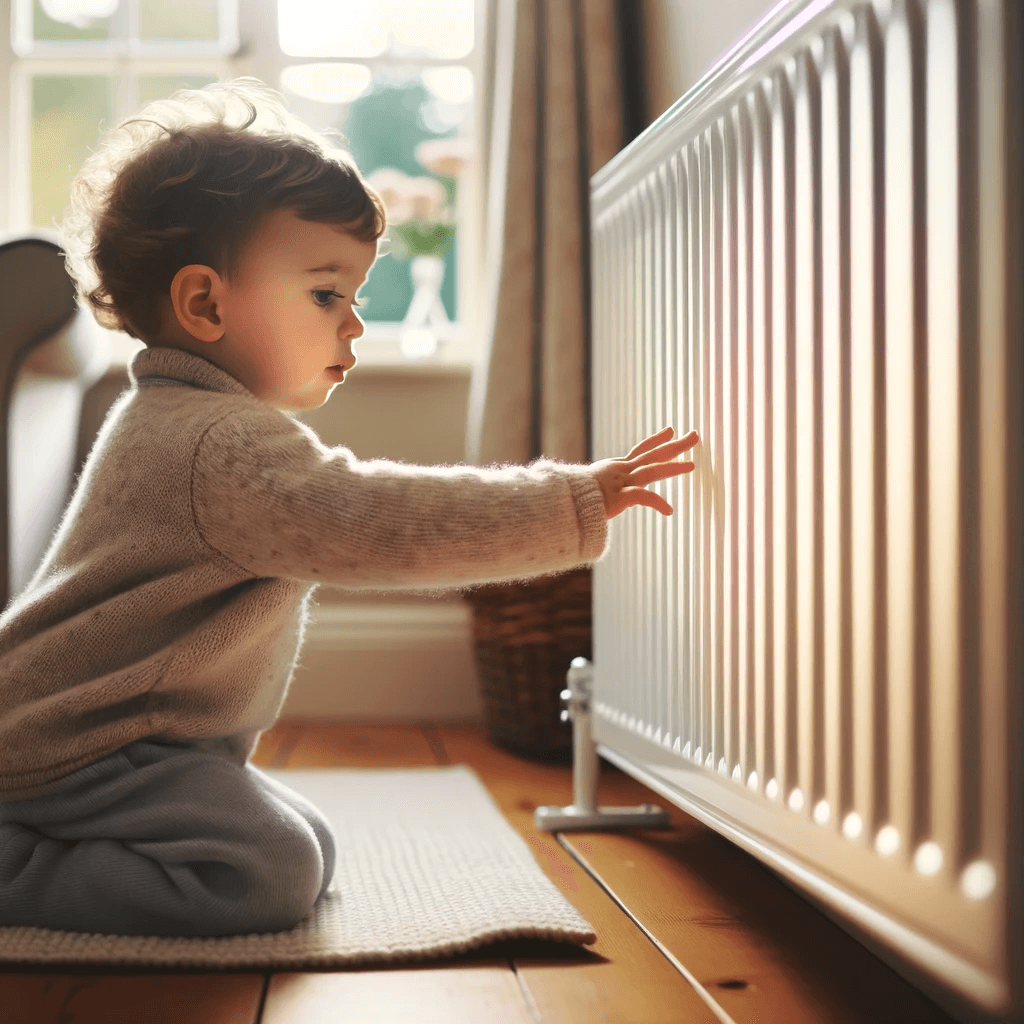
When selecting the right design, choose covers with sufficient openings or grills to ensure good heat distribution. Wood is attractive and provides excellent safety for children, while galvanized metal is highly conductive for heat.
Creating your own radiator cover allows for customization to reflect personal taste while meeting practical needs. Radiator covers also offer the advantage of extra shelving and can improve the atmosphere of a room.
Make sure your cover is installed correctly to keep heat distribution effective and to make your living space more comfortable.
Conclusion
You’ve considered both looks and functionality, and the verdict is in: a well-designed radiator cover can offer safety, style, and warmth.
Opting for a cover that’s well-ventilated ensures that your heating efficiency isn’t compromised. This perfect pairing of design and practicality guarantees that the inviting atmosphere you seek doesn’t detract from your heating needs.
Have confidence in your choice, as it’s informed by a smart combination of technical understanding and aesthetic insight.
Your space is poised to be warm and inviting.

